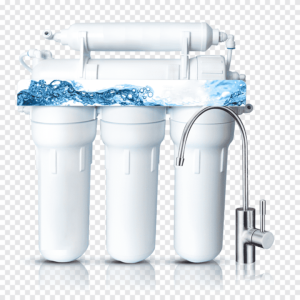Installing a water purifier machine in your home is essential to ensuring access to clean and safe drinking water. With numerous options available, choosing the right house Water Purifier Filter and setting it up can seem daunting. This guide will provide a comprehensive step-by-step process to help install your water purifier machine effectively.
Choosing the Right Water Purifier for Your Home
Selecting the appropriate water purifier depends on various factors, such as the local water quality, the cleaner’s capacity, and your budget. Types include reverse osmosis (RO), ultraviolet (UV), and activated carbon filters, each suited to different contamination issues. For instance, RO systems are excellent for removing dissolved salts, whilst UV filters are effective against bacteria and viruses.
Evaluate your household’s daily water consumption to pick a model that meets your needs without occupying excessive space. Also, additional features like filter change indicators and maintenance requirements should be considered for a more informed choice.
Preparing the Installation Area
Choose a location near the water supply and electrical outlet, ensuring the area is clean, dry, and well-ventilated. Clear any obstructions that might hinder the installation process. If you need to drill into walls or countertops, ensure you have the necessary permissions, especially if renting. Additionally, confirm the area can support the weight of the cleaner once installed. Having a well-prepared area will facilitate a smoother installation process.
Unboxing and Inspecting Your Water Purifier
Carefully unbox your water purifier machine, handling all components carefully to avoid accidental damage. Typical contents include the purifier unit, filters, tubes, and mounting hardware. Inspect each item for any visible damage that may have occurred during shipping. Verify that all components listed in the user manual are present. This step is crucial to avoid missing parts that could delay your installation. Familiarising yourself with these components and their respective functions will streamline the subsequent steps.
Assembling the Necessary Tools
Before beginning the installation, gather all necessary tools to ensure a smooth process. Essential tools typically include a spanner, screwdriver, drill, measuring tape, and possibly a spirit level. Consult the manufacturer’s manual for any model-specific requirements. Having these tools ready will save time and prevent interruptions. Additionally, consider using PTFE tape for threaded connections to avoid leaks. Ensure your workspace is organised, allowing easy access to each tool as needed. Familiarising yourself with the installation steps beforehand will also help identify any additional required tools.
Installing the Inlet Water Valve
Begin by shutting off your main water supply to prevent any accidental spills. Locate the designated inlet point on your water purifier as specified in the manufacturer’s instructions. Using a spanner, securely attach the inlet water valve to this point, ensuring a tight fit to avoid potential leaks. If your setup involves threading, wrap PTFE tape around the threads for an extra layer of leak prevention. Connect the inlet hose once the valve is attached, ensuring it is properly secured. This step is essential for controlling the water flow into the cleaner, so double-check all connections for tightness before proceeding.
Mounting the House Water Filter Unit
Once the inlet water valve is securely in place, mount the house water filter unit on your chosen wall or worktop. Refer to the manufacturer’s instructions for precise measurements and drilling locations. Use a spirit level to ensure the unit is aligned correctly before securing it with screws or bolts. If the cleaner is heavy, consider using wall anchors for added stability. Ensure the unit is mounted at a height that allows easy access for maintenance and filter changes. Confirm that all mounting hardware is tightly secured to prevent movement or vibrations during operation.
Connecting the Water Supply
Attach the inlet hose from the valve to the water purifier, ensuring all connections are properly secured. Use PTFE tape on threaded connections to prevent leaks, wrapping it around the threads before tightening. After securing the hose, verify that all fittings are tight to avoid water spillage when the supply is turned back on. Be mindful of the hose’s length and positioning to prevent kinks or bends that could restrict water flow. Once confident that all connections are secure and the hose is correctly positioned, you are ready to proceed to the next installation steps.
Setting Up the Electrical Connections
Some water purifiers require an electrical connection, especially those with UV lamps or RO systems. Find a suitable socket near the installation area and plug in the power cord. Ensure that the socket is properly earthed to prevent any electrical hazards. Keep the power cord away from water sources to avoid accidental splashes or spills. You should install a residual current device (RCD) to protect against electrical faults for extra safety.
Ensure the electrical setup complies with local safety regulations and avoid using extension cords or overloading the circuit. If you need clarification on any aspect of the electrical connection, it is wise to seek the advice of a qualified electrician.
Initial Flushing and Cleaning Water Filter Machine
When you first install a water purifier machine, it’s essential to perform an initial flushing and cleaning. This crucial step not only prepares your filter for optimal performance but also ensures that you receive the highest quality water. Here’s why initial flushing and cleaning are so beneficial:
Removes Manufacturing Residue
New water purifier machines can have traces of dust, debris, or other residues from the manufacturing process. Initial flushing helps to remove these impurities, ensuring that your first use of the machine is free from any contaminants.
Enhances Filtration Efficiency
By running water through the system before its first use, you activate the filter media and allow it to settle properly. This process improves the filter’s efficiency, enabling it to capture and remove impurities more effectively when you start using it regularly.
Prevents Unpleasant Tastes and Odors
Sometimes, new filters may impart an unpleasant taste or odor to the water. Initial flushing clears out any residual compounds from the manufacturing process that could affect the flavor or smell of your water, providing you with clean, fresh-tasting water right from the start.
Extends the Lifespan of Your Filter
Flushing out any particles or contaminants before the machine starts operating under regular conditions can reduce wear and tear on the filter. This proactive step helps in prolonging the lifespan of your filter, ensuring that it operates efficiently for a longer period.
Ensures Compliance with Manufacturer Recommendations
Most water filter manufacturers recommend initial flushing as part of the setup process. Following these guidelines helps in adhering to warranty conditions and maintaining the machine’s effectiveness.
In summary, initial flushing and cleaning of your water filter machine are essential for removing residual contaminants, enhancing filtration performance, and ensuring that you enjoy clean, fresh-tasting water right from the start.
Testing the Water Quality
After flushing the system, the next step is to test the water quality to ensure the cleaner functions correctly. A TDS (Total Dissolved Solids) meter will be used to measure the TDS levels in the purified water. The TDS levels should be significantly lower than your tap water’s. In addition, consider using water testing kits that check for common contaminants such as chlorine, lead, and bacteria. These kits are readily available online or at DIY stores. Follow the instructions provided with the testing kit for accurate results.
Another important aspect is to taste and smell the water. Pure water should have no discernible taste or odour. Any remaining odd tastes or smells could indicate that the system needs further flushing or that the filters require additional cleaning. For those using a UV purifier, confirm that the UV lamp is functioning properly by checking the indicator light on the unit. Regular water quality testing, particularly in the initial stages, will give you confidence in your water filter’s performance and ensure your drinking water remains safe and clean.
Regular Maintenance and Filter Replacement
Regular maintenance is key to keeping your water purifier running efficiently. Adhere to the manufacturer’s recommendations for filter replacement, which typically involves replacing pre-filters every 6-12 months and post-filters every 1-2 years. Keeping track of when you last replaced the filters can help you maintain a consistent schedule.
In addition to replacing filters, periodically check the purifier unit and its components for signs of wear or damage. Inspect hoses and connections for leaks and ensure all parts are tightly secured. For models with UV lamps, verify their functionality periodically, as UV lamps usually need replacement every year.
Regular cleaning of the purifier’s external surfaces using a soft cloth and mild detergent will prevent dust build-up and ensure the unit remains hygienic. If your model includes a filter change indicator, pay attention to it and act promptly when it signals that a change is needed.
By keeping up with routine maintenance, you will ensure your water filter delivers consistently clean and safe drinking water while extending the purifier’s lifespan.
Troubleshooting Common Issues
Water purifiers may sometimes experience leaks, reduced water flow, or unexpected noises. Start by ensuring all connections are secure and free of obstructions. Low water pressure can often be traced to clogged filters; verify the filter’s condition and replace it if necessary. If your unit is making unusual sounds, it might be due to air trapped in the system—running water through the cleaner for a few minutes can help alleviate this.
For electrical issues, ensure the power connection is stable and the unit is properly plugged in. For UV purifiers, confirm that the UV lamp is operational and replace it if it has reached the end of its lifespan. Review the troubleshooting section in your user manual for model-specific guidance and refer to the maintenance record to pinpoint potential recurring issues. If problems persist, contacting the manufacturer’s customer support can provide specialised assistance and solutions.
Conclusion
Setting up a Water Purifier Filter at home may seem complex, but following this step-by-step guide can ensure a smooth installation process and reliable access to clean water. Regular maintenance and timely filter replacements will keep your purifier functioning optimally, providing your family with safe drinking water. Stay attentive to any operational issues and address them promptly to extend the life of your water filter. With these tips, you can confidently manage your water purification needs, providing a healthier living environment for your household.
Frequently Asked Questions (FAQs)
1. How often should I replace the filters in my Water Purifier Filter?
The frequency of filter replacement depends on the type of Water Purifier Filter and usage. Generally, pre-filters should be replaced every 6-12 months, while post-filters may need replacement every 1-2 years. Check the manufacturer’s guidelines for specific recommendations. Some cleaners also feature a filter change indicator that alerts you when it’s time for a replacement.
2. Can I install a House Water Filter or hire a professional?
While many water purifiers come with user-friendly installation guides, if you need to be more uncomfortable with DIY tasks or your cleaner requires complex plumbing or electrical connections, it’s advisable to hire a professional. Proper installation of House Water Filter ensures the purifier operates efficiently and avoids potential issues.
3. What should I do if my water purifier is leaking?
If you notice leaks, first check all connections and hoses for tightness. Leaks often occur due to loose fittings or damaged hoses. Ensure that the inlet water valve and other connections are properly secured. If leaks persist, consult the troubleshooting section of your user manual or contact the manufacturer’s support for assistance.
4. How can I test the water quality after installation?
After installing your water purifier, test the water quality using a TDS (Total Dissolved Solids) meter to measure the TDS levels. Usewater testing kits should be used to check for contaminants like chlorine, lead, and bacteria. Pure water should have no discernible taste or odour. Regular testing ensures your purifier is functioning correctly and your water remains safe.
5. What should I do if my water purifier’s UV lamp isn’t working?
If your UV purifier’s lamp isn’t functioning, first check if the lamp is properly seated and connected. Ensure the power supply is stable and the lamp is not burned out. UV lamps typically need replacement every year. If issues continue, consult the user manual or contact customer support for guidance on troubleshooting or replacing the lamp.
| Related Business Listings |
| Contact Directory |
| Local Business Profiles |



